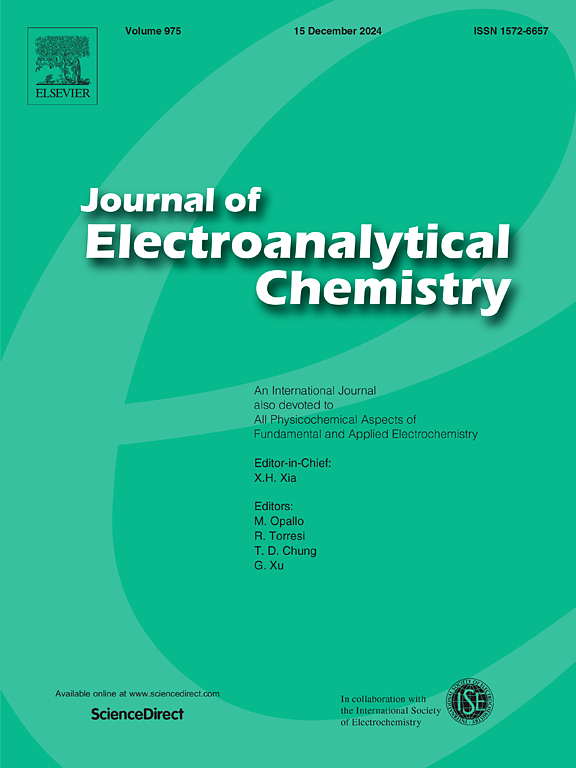From sunflower shells to hybrid-power cells: Boron-enhanced carbon electrodes for next-generation Zn-ion supercapacitors
IF 4.1
3区 化学
Q1 CHEMISTRY, ANALYTICAL
引用次数: 0
Abstract
Zinc-ion hybrid supercapacitors have emerged as a promising technology, combining the high energy density of batteries with the high-power density of supercapacitors. This study investigates the performance of zinc-ion hybrid supercapacitors utilizing boron-doped (B-doped) and undoped activated carbon (AC) as electrode materials. Recognizing the importance of sustainability, we utilized activated carbon derived from locally abundant sunflower seed shells through a controlled pyrolysis process. The synthesized B-doped and undoped AC materials were comprehensively characterized using advanced techniques, including X-ray Diffraction (XRD) to confirm the amorphous carbon structure, Fourier-Transform Infrared (FTIR) spectroscopy to identify functional groups, and Thermogravimetric Analysis (TGA) to assess the thermochemical properties and volatile matter content. Raman spectroscopy revealed that the intensity ratio of the D-band to G-band (ID/IG) was 0.938 for the B-doped AC and 0.832 for the undoped AC, indicating an increased level of disorder in the carbon lattice due to boron incorporation. This was further supported by X-ray Photoelectron Spectroscopy (XPS), which confirmed the presence of boron in the B-doped AC, validating the successful doping process. BET analysis revealed a significant increase in surface area for the B-doped AC (600 m2/g) compared to the undoped AC (200 m2/g), which contributed to the enhanced electrochemical performance of the B-doped material. Electrochemical performance was evaluated through methods such as Cyclic Voltammetry (CV), constant-current charge-discharge tests, and Electrochemical Impedance Spectroscopy (EIS). The study examined the influence of ZnSO₄ electrolyte concentration (ranging from 0.5 to 2 M) on the performance of the Zn-ion hybrid supercapacitor. Notably, the B-doped AC material exhibited superior performance, delivering a gravimetric capacitance of approximately 105 F/cm2 in 1.5 M ZnSO₄ electrolyte at a current density of 0.1 mA/cm2, with 100 % coulombic efficiency retained over 100 cycles. This performance was significantly enhanced compared to the undoped AC material, which delivered around 45 F/cm2 under the same conditions. The findings underscore the potential of B-doping in improving the electrochemical properties of sustainable carbonaceous materials, offering an effective pathway toward high-performance zinc-ion hybrid supercapacitors using locally available resources.

求助全文
约1分钟内获得全文
求助全文
来源期刊
CiteScore
7.80
自引率
6.70%
发文量
912
审稿时长
2.4 months
期刊介绍:
The Journal of Electroanalytical Chemistry is the foremost international journal devoted to the interdisciplinary subject of electrochemistry in all its aspects, theoretical as well as applied.
Electrochemistry is a wide ranging area that is in a state of continuous evolution. Rather than compiling a long list of topics covered by the Journal, the editors would like to draw particular attention to the key issues of novelty, topicality and quality. Papers should present new and interesting electrochemical science in a way that is accessible to the reader. The presentation and discussion should be at a level that is consistent with the international status of the Journal. Reports describing the application of well-established techniques to problems that are essentially technical will not be accepted. Similarly, papers that report observations but fail to provide adequate interpretation will be rejected by the Editors. Papers dealing with technical electrochemistry should be submitted to other specialist journals unless the authors can show that their work provides substantially new insights into electrochemical processes.

 求助内容:
求助内容: 应助结果提醒方式:
应助结果提醒方式:


